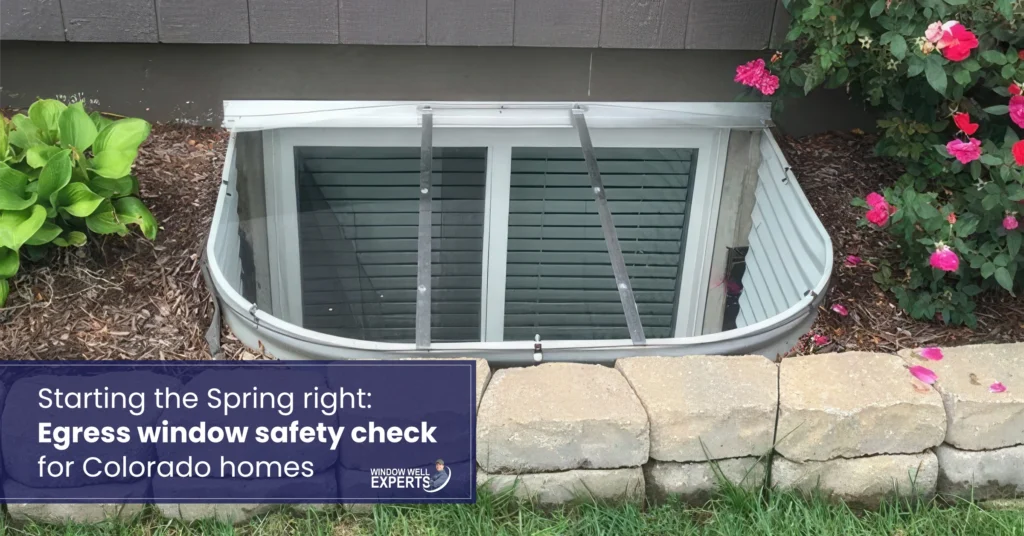Setting the stage for diligent safety measures in Colorado homes, our article delves into the importance of egress window checks to safeguard every family member. Understanding the fundamental concept of egress windows and their crucial role in emergency situations lays the groundwork for ensuring compliance with residential codes.
First of all, what is an egress window, and when is one needed?
An Egress Window is specifically engineered to allow people to escape any emergency situation. This includes windows installed in any residence, including bedrooms or sleeping rooms, attics, and basements. Residential codes state that all bedrooms must have two means of exit in case of emergency.
It’s important that these windows operate easily and with no special knowledge. For instance, a complicated window lock will waste precious time when time is of the essence. Being able to flip open a latch, slide a window open, and escape a fire or a flooded basement gives the occupants of the home peace of mind.
Most Colorado municipalities have adopted the IRC (International Residential Code) for basement windows and other basement egress, which outlines egress window requirements in Colorado. See the next section for a full explanation. If a window is one of the means of egress for a room, that window should have 5.7 square feet of net clear opening. If you are in the process of installing a new basement egress system, always contact your local building inspector to prevent added expense.
Windows above grade are not as strictly regulated state-wide. They should be easy to open just like the windows in the basement, and if the windows have locks, be easy to use. An egress ladder should be available for any bedroom above the ground floor or below ground level.
OK, how big of an egress window is needed for a basement bedroom? And who is in charge of determining that?
Colorado codes are primarily adopted and enforced locally. Two state agencies adopt state minimum plumbing and electrical codes respectively. Colorado jurisdictions are required to adopt and enforce one of the three most recent versions of the IECC upon updating any other building code. The Division of Fire Prevention and Control adopts and enforces codes (2018 IBC, IRC, IFC, IMC, IEBC, IECC) for all public schools and junior colleges and some health facilities. The Colorado Examining Board of Plumbers has adopted the 2021 IPC, IFGC and plumbing chapters of the 2021 IRC as the state minimum plumbing code.
This being said, please check with your local building inspector as regulations available online may be non-existent or out of date. It’s essential to ensure compliance with egress window codes for Colorado, which dictate specific requirements for safety and accessibility.
The diagram below from the City of Boulder, CO (link to full PDF here) is one of the clearest and most concise explanations of basement egress window codes, and other basement egress window well and egress ladder regulations available. Note that the dimensions of the openable area may be different in other municipalities.
Be sure that the “leg up” height from the floor is 44” or less. Helpful hint: a bench or stool under the window will make it easier for children or less agile people to be able to escape a bad situation.
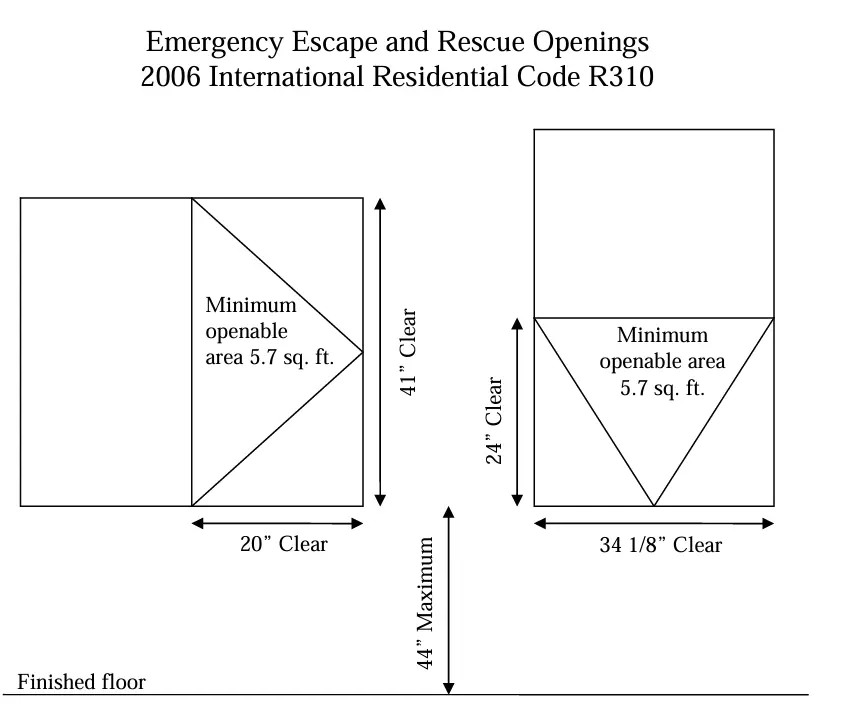
What if all or part of the installed egress window will be below ground level?
An egress window well will fix this problem. There are a number of different egress wells readily available for purchase, or they can be made on site of different materials such as poured concrete, pavers, or timbers.
Minimum IRC code is 36’ x 36” opening – this will allow for easy escape for the home occupants and also will be large enough for a firefighter with air tanks to rescue anyone incapacitated inside. If a crank out window is installed, remember that the area behind the window when it is fully open will often be subtracted from the well opening, so plan the well placement carefully if that is the case.
A rule of thumb is to have the window well extend at least 8-10 inches below the window sill for best water drainage. This area will act as a “sink” to hold the water from a downpour or a spring thaw and prevent the water from getting into the basement. See the photos below. The first photo shows an improvised window well made of boulders. Note that the bottom of the well is “native soil” that will likely not drain very well, in spite of the window well drain showing under the left window.
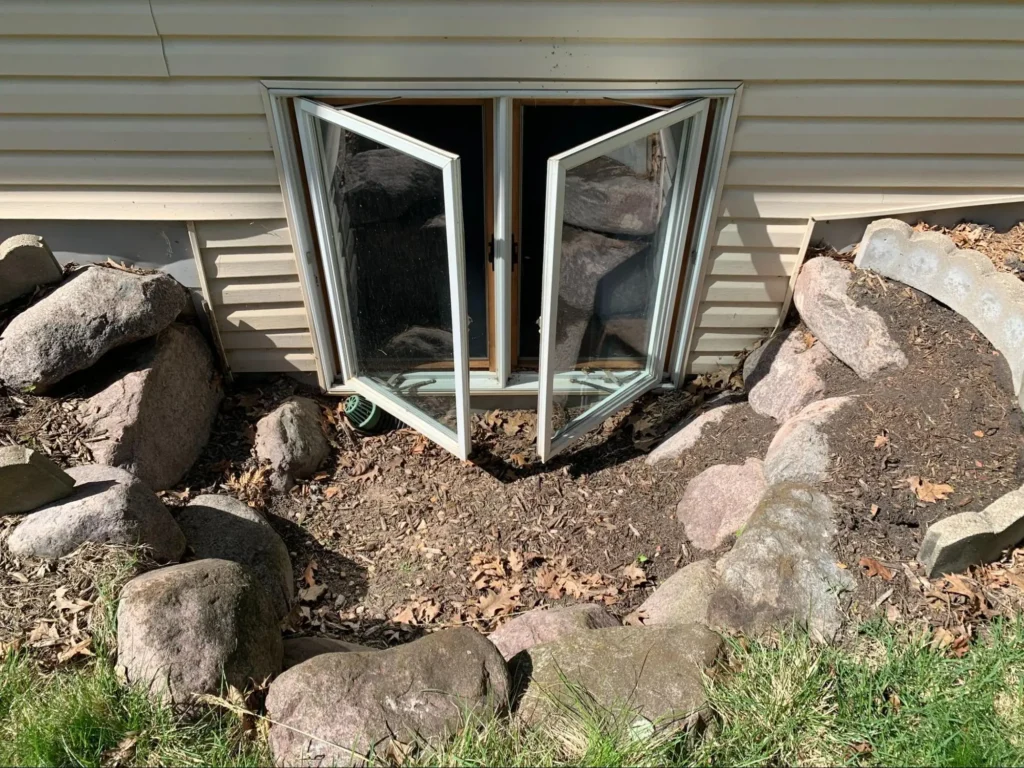
Please see the photos below. After a metal well was installed, the bottom of the well was filled with river rock that drains freely, and will prevent water from infiltrating under the window, like it was doing before the new window well installation.
These egress windows will still open freely, and the drain is installed properly so the window won’t hit it when it is cranked open. The second photo shows the well installed with some pavers around it for the window well cover to sit on.
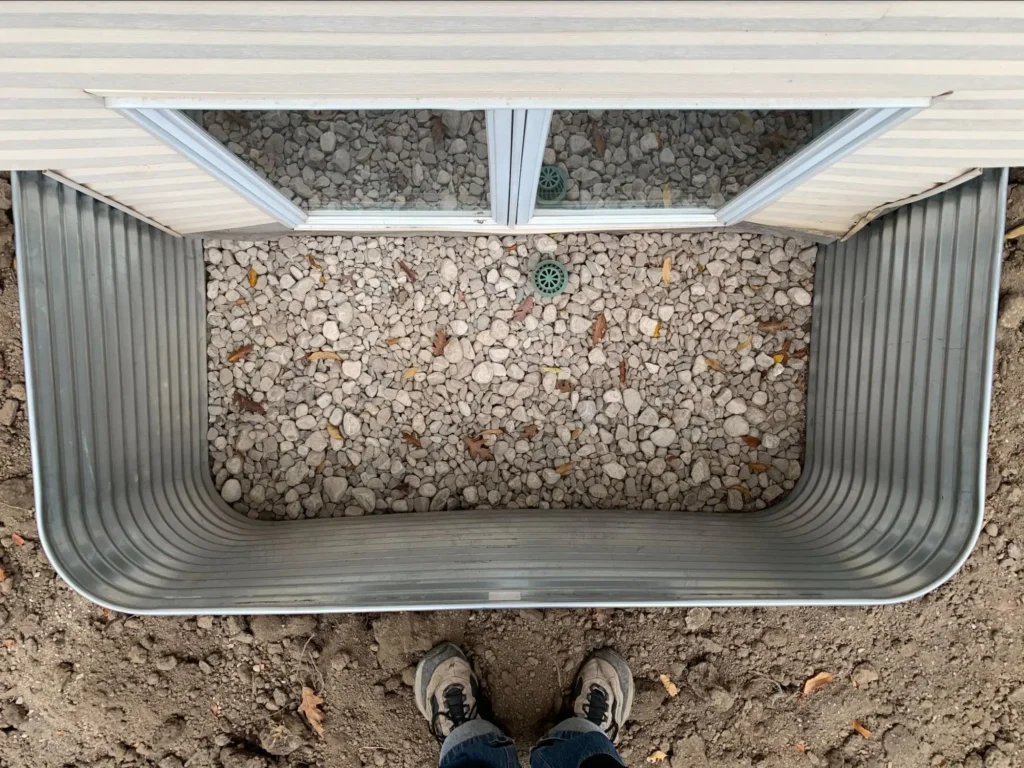
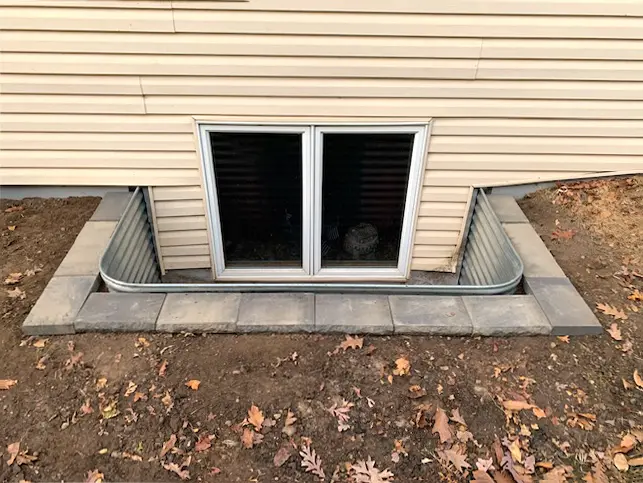
Egress windows are critical because:
First and foremost, they provide a vital escape route in case of an emergency, greatly reducing risk to the home’s occupants. Code compliance is assured, so various organizations, including building inspectors, property management companies, and insurance company’s requirements are met for legal occupancy.
The long term benefits of installing egress window wells are many.
- As discussed, code compliance is the law, and will keep the local building inspector satisfied.
- The peace of mind of having emergency actions planned and rehearsed with family members cannot be denied.
- Having the basement, second floor, and attic bedroom/sleeping spaces properly outfitted with the correct windows and egress ladders for emergencies will significantly increase the value of the home. The difference between a finished basement or attic and being able to call those rooms bedrooms will add thousands of dollars to the home’s value.
Remember, egress windows are more than just code compliance—they are a lifesaving feature that ensures the well-being of the family.
If you’re unsure about your existing egress window, consider having it inspected or upgraded to meet current standards. If you are upgrading your windows, remember to get multiple estimates and check the contractor’s credentials.
For specific egress window requirements in Colorado, consult trusted professionals, and the local building inspector as the final authority.
For additional insights into bolstering home safety, explore our previous articles. In “Enhancing Home Safety: Egress Ladders” we dive into the significance of egress ladders in ensuring comprehensive safety measures for your residence. Learn more about their importance and installation considerations here.
Additionally, “Comprehensive Egress Window Well Buying Guide” we have listed essential tips and considerations to make informed decisions when selecting the right window well for your home. Discover more here.

